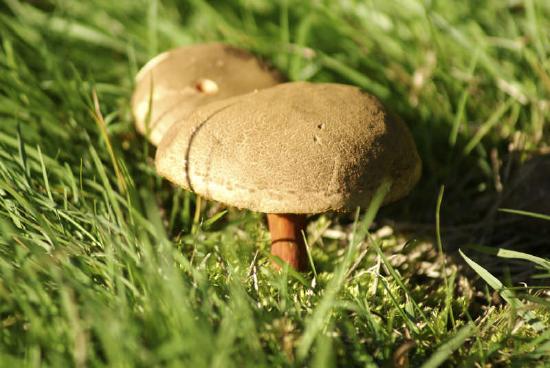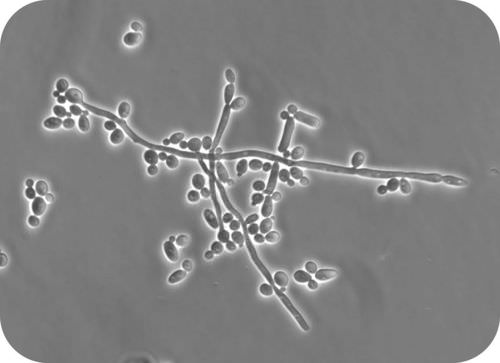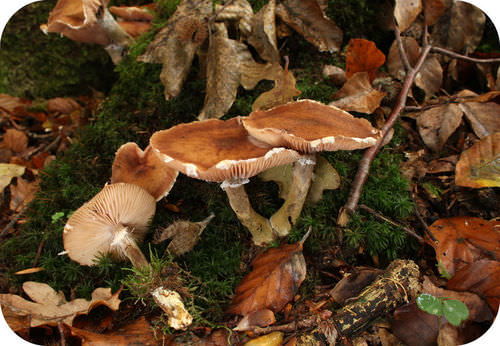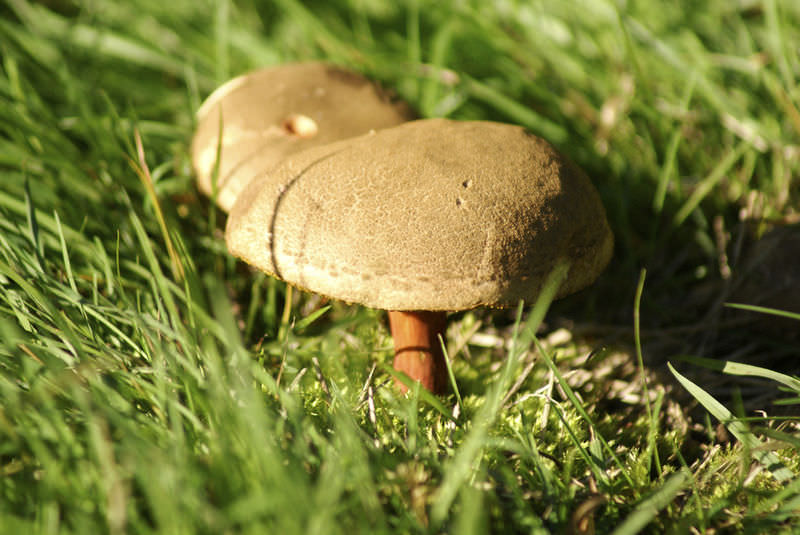8.16: Fungi Structure
- Page ID
- 12202

Is the structure important?
Of course. Though mushrooms may be the most common type of fungus, fungi also include rusts, smuts, puffballs, truffles, morels, molds, and yeasts, as well as many less well-known organisms. And, except for yeast cells, they all have similar structures, which are usually hidden deep within their food source.
Structure of Fungi
Except for yeasts, which grow as single cells, most fungi grow as thread-like filaments, like those shown in Figure below. The filaments are called hyphae (singular, hypha). Each hypha consists of one or more cells surrounded by a tubular cell wall. A mass of hyphae make up the body of a fungus, which is called a mycelium (plural, mycelia).
The hyphae of most fungi are divided into cells by internal walls called septa (singular, septum). Septa usually have little pores that are large enough to allow ribosomes, mitochondria and sometimes nuclei to flow among cells. Hyphae that are divided into cells are called septate hyphae. However, the hyphae of some fungi are not separated by septa. Hyphae without septae are called coenocytic hyphae. Coenocytic hyphae are big, multinucleated cells.
 These branches are hyphae, or filaments, of a mold called Penicillium.
These branches are hyphae, or filaments, of a mold called Penicillium.A mycelium may range in size from microscopic to very large. In fact, one of the largest living organisms on Earth is the mycelium of a single fungus. A small part of a similar fungus is pictured in Figure below. The giant fungus covers 8.9 square kilometers (3.4 square miles) in an Oregon forest. That’s about the size of a small city. The fungus didn’t grow that large overnight. It’s estimated to be 2,400 years old, and it’s still growing!
 The fungus shown here has been dubbed the “humongous fungus” because it covers such a large area.
The fungus shown here has been dubbed the “humongous fungus” because it covers such a large area.Fruiting Bodies
Some fungi become noticeable only when producing spores (fruiting), either as mushrooms or molds. For example, you can see the fruiting bodies of the Armillaria fungus in the Figure above, but the large “body” of the fungus, the mycelium, is hidden underground. This fruiting body, known as the sporocarp, is a multicellular structure on which spore-producing structures form. The fruiting body is part of the sexual phase of a fungal life cycle. The rest of the life cycle is characterized by the growth of mycelia.
Dimorphic Fungi
Some fungi take on different shapes, depending on their environmental conditions. These fungi are called dimorphic fungi, because they have “two forms.” For example, the fungus Histoplasma capsulatum, which causes the disease histoplasmosis, is thermally dimorphic; it has two forms that are dependent on temperature. In temperatures of about 25°C, it grows as a brownish mycelium, and looks like a mass of threads. At body temperature (37°C in humans), it grows as single, round yeast cells.
Summary
- Most fungi grow as thread-like filaments called hyphae.
- A mass of hyphae make up the body of a fungus, called a mycelium.
Review
- Describe the general structure of multicellular fungi.
- What is a fruiting body?
- Relate the structures of hyphae, mycelia, and fruiting bodies to one another.
| Image | Reference | Attributions |
 |
[Figure 1] | License: CC BY-NC |
 |
[Figure 2] | Credit: Image copyright Andre Nantel, 2014 Source: http://www.shutterstock.com License: Used under license from Shutterstock.com |
 |
[Figure 3] | Credit: H. Krisp Source: commons.wikimedia.org/wiki/File:Gemeine_Hallimasch_Armillaria_ostoyae.jpg License: CC BY 3.0 |

